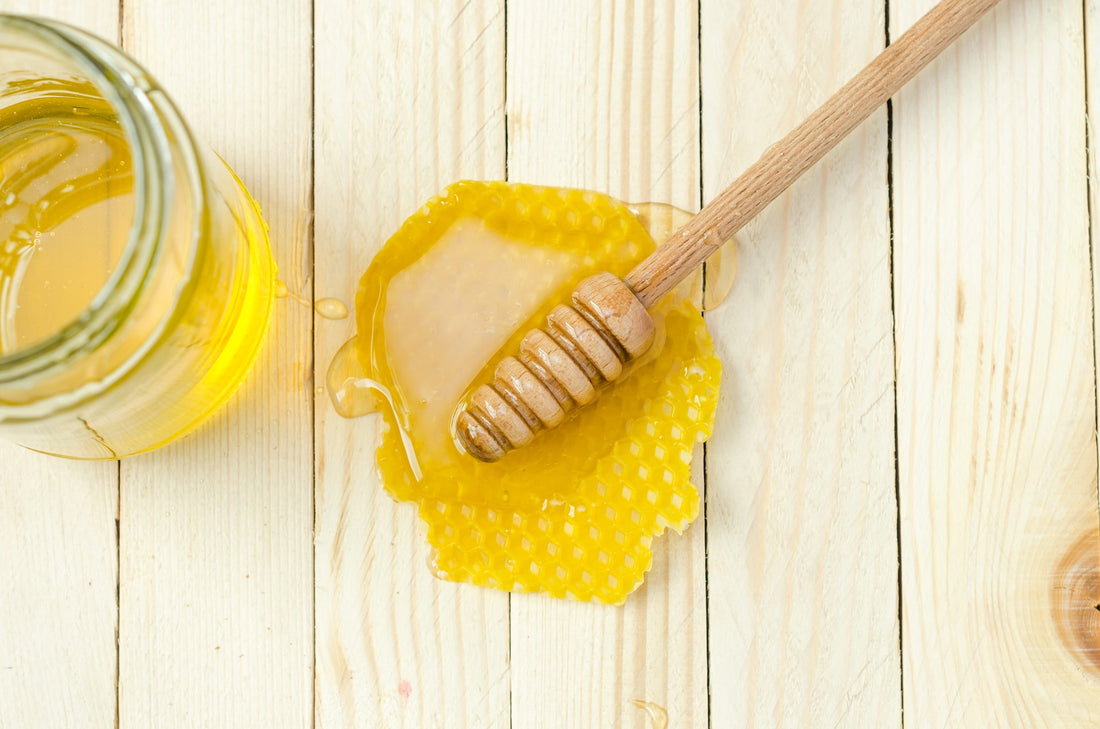Honey. It’s golden, it’s sticky, it’s delicious - and it’s a perfect skincare ingredient?
Well, one thing’s for sure: Winnie the Pooh was onto something when he wound up slathering the stuff all over himself.
 Here’s everything we know about honey in skincare and why you should give it a try.
Here’s everything we know about honey in skincare and why you should give it a try.
Honey’s Healing Properties
People have been using honey for centuries, both in culinary settings and for medicinal purposes. The Ancient Egyptians considered it a skin-healing ingredient, and Cleopatra herself supposedly used milk and honey masks to obtain a clear, glowing complexion.
The main reason for this? Honey’s outstanding antimicrobial properties.
Think about it: there’s a reason why honey never goes bad (archaeologists even found a pot of honey in a 3000-year-old Egyptian tomb - and it was still edible!) It’s chock-full of enzymes that release anti-bacterial compounds like flavonoids, hydrogen peroxide, and phenolic acid. These make honey particularly effective at helping the body fight off infections and heal wounds, both internally and externally.
On top of that, honey has tons of antioxidants that protect the skin from free radical damage and heal existing areas of concern.
What This Means For Skincare
Well, effective honey is antibacterial/anti-viral/anti-fungal, as well as an anti-inflammatory and humectant. That means:
- Due to the natural antibiotic and antimicrobial properties can effectively fight off acne-causing bacteria and reduce inflammation
- It can effectively draw moisture into the skin
- It can soothe irritated skin conditions like psoriasis and eczema
That said, it’s important to note that not all honey was created equal, and its beneficial effects will vary largely depending on its purity, where it’s from, the type of bees that pollinated it, etc.
As a rule of thumb, though, you want to use raw, unprocessed honey, as this will contain the most potent enzymes with antioxidant, antibacterial and healing properties.
And if you’re looking for the best of the best, you can’t go wrong with manuka honey.
What About Manuka Honey?
Manuka honey is produced by honey bees that feed on the manuka tree in New Zealand (and Australia). It’s essentially the superpower of the honey world.
This, in large part, has to do with methylglyoxal. Methyl-what?
Ok, so most honeys get their antimicrobial properties from hydrogen peroxide. Manuka honey, on the other hand, contains both hydrogen peroxide and methylglyoxal (which comes from the manuka bush).
There’s even a rating system to determine how much methylglyoxal a particular jar of Manuka honey has. This rating scale is called the Unique Manuka Factor (UMF), and it specifically measures the potency of the methylglyoxal and how antibacterial the honey is (if you’ve ever purchased Manuka honey and seen numbers on the jar, this is likely what you’re looking at, and a general rule of thumb is that the higher the number, the better the honey).
This special quality makes manuka the gold standard of the honey world. Specifically, it’s:
- Strongly antimicrobial: Its antimicrobial properties are even stronger than those of typical honey. In fact, it's even been shown to have antibacterial effects on superbugs like e.coli, MRSA, and staph infections.
- Ultra-moisturizing: The honey’s sugar content makes it a natural humectant, meaning it can both draw moisture in and help you retain it.
- Promotes wound healing: Manuka honey recruits fibroblasts, the cells needed to help wounds heal. On top of that, it creates the moist environment and protective barrier that are needed to speed up healing. That’s why it's often used to treat wounds, burns, and ulcers.
- Anti-inflammatory: It has more anti-inflammatory properties than any other kind of honey, which makes it particularly effective at treating conditions like psoriasis and eczema.
- Antioxidant: Manuka honey may down-regulate skin-damaging reactive oxygen species (caused by exposure to free radicals), making it beneficial for anti-aging purposes.
Overall, then, manuka honey can help support the skin’s natural immunity, strengthen its natural barrier, and protect it from free radical damage and environmental factors. And it’s gentle enough for use on even the most sensitive skin types.
How to Find Honey Products

Again, it’s important to keep in mind that not all honey was created equal. For one, its composition really depends on the bees and the environment in which they live. We already discussed how this is true of manuka honey, but it applies to all varieties.
A hive that lives in Yosemite and gathers honey from the mountain’s wildflowers, for example, will have honey with a different chemical composition than a hive that lives in someone’s backyard.
Plus, many commercial producers destroy their honey and fill it up with sugar and other artificial ingredients to drive down the price. That’s why a 2011 study of 30 producers found absolutely no trace of pollen, vitamins, or natural compounds in their honey products (yikes).
The easiest way to start and make sure that you’re dealing with effective, potent honey? Go DIY.
Find high-grade manuka honey from a reputable grocery store or farmer’s market (look for a UMF of 16+) and apply it as a DIY face mask for 20-30 minutes, once a week.
Don’t have time for the inevitable stickiness? Try some honey-based skincare products - but do your research to make sure you’re not getting a nutrient-poor product.


